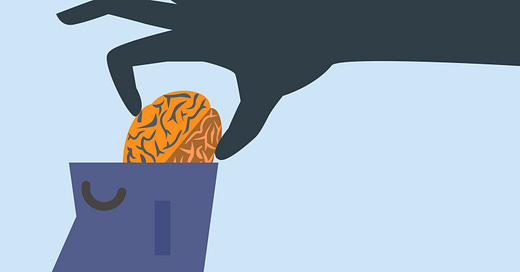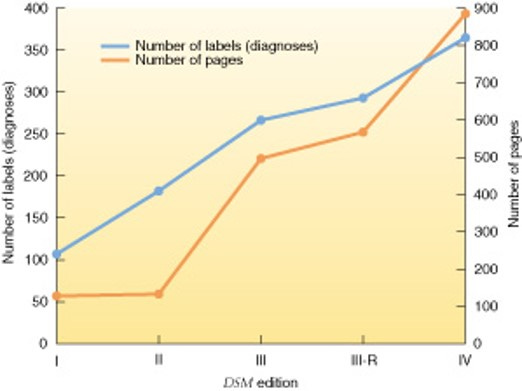A text from my child on Tuesday - "Dad, I think I have OCD."
A conversation with my child on Thursday - "Dad, I might have depression."
Before asking how they reached these conclusions, I generated a hypothesis - from listening to some untrained asshole trying to drive traffic to their TikTok, Instagram, or X accounts.
From the untrained asshole's perspective, good on ya, it works. You are probably raking in eyeballs and advertising revenue. From an ethics standpoint, it is disturbing. Children, teens, and adults without sufficient exposure to psychology believe they are suffering from serious mental disorders such as obsessive-compulsive disorder (OCD), generalized anxiety disorder, or autism.
Mental health professionals are witnessing a surge in self-diagnoses. While it's crucial to promote mental health awareness, certain content on these platforms is harmful. Especially with youth just getting a grasp on their identity - who would be fine without a stranger explaining to them who they are.
The Influence of Social Media Charlatans
On social media, youth embark on a thrilling scavenger hunt, sifting through a buffet of mental health confessions to find the one that resonates most with their own experiences. Charismatic influencers dish out captivating stories about symptoms, coping mechanisms, and self-diagnoses.
Imagine you're a teenager scrolling through these videos. You come across an "influencer" talking about their trouble with social interactions -
"It's uncomfortable to make eye contact with people."
"I've memorized 'scripts' about what I am going to say before meeting people."
"I smile even when I don't feel like it."
"My interests are unique, maybe even a little bit strange."
"I am very literal and often don't understand sarcasm or passive-aggressive comments."
"It's really stressful when people change plans at the last minute."
This hits a nerve, right? You've had similar experiences. So, you wonder, "Could I have autism too?" But hold your blender sized Tumbler with two hands! This could just be the usual teenage clumsiness. This could be the dramatic dip in social activity since the pandemic hit in 2020. This could be plain old social anxiety, which, by the way, is as contagious as the common cold during a two-person conversation. Autism is real. But it's fascinating how we're quick to label anyone who's a bit socially awkward or lacking in social finesse as autistic.
The more socially attractive the online babbler, the more persuasive they are. Unfortunately, physical attractiveness and popularity do not predict the provision of accurate information
Here's my go-to rule of thumb: personality is a bell-curve. Some folks are bound to be at the lower end of the spectrum for every personality trait we cherish. Half of us are going to be less than average in social skills. But being a social klutz doesn't mean you've got a mental disorder! If you're brooding over a latte alone in the corner of a café, or obsessively perfecting a pickleball topspin until your fingers are bloody raw, it doesn't mean you're battling a psychological problem. It might mean you're a highly sensitive individual with a flair for creativity or a competitive spirit.

That said, our system for diagnosing mental health conditions is a mess.
The Fluff in Psychiatry’s Bible
Welcome to the wild roller coaster ride known as the Diagnostic and Statistical Manual of Mental Disorders (DSM). It's a place where consistency and simplicity were left behind at the ticket booth. Just like a whimsical carnival ride that adds more twists and turns with each amendment, our system for diagnosing mental health conditions has transformed into a mind-boggling experiences that leaves most riders disoriented and nauseous.
The American Psychiatric Association (APA) revised this thrill ride of a manual numerous times:
DSM-I: Unveiled in 1952, the theme park started.
DSM-II: In 1968, it added a few more spins, like a gentle Ferris wheel.
DSM-III: 1980 saw the introduction of upside down roller coasters. Unsatisfied, the APA added more loops with the DSM-III-R in 1987.
DSM-IV: By 1994, we had a full-fledged amusement park. Tweaked slightly with the DSM-IV-TR in 2000.
DSM-5: In 2013, the park introduced a few more thrill rides. While in 2022, the DSM-5-TR offered a few more.
How complicated did DSM-5 get? Know that there are 270 million ways that a person could possess symptoms that meet criteria for both Post-Traumatic Stress Disorder (PTSD) and Major Depressive Disorder (MDD). That’s like trying to find a lone person within the entire population of Indonesia! If you're not an expert in Indonesian culture or geography, and haven't set foot in the country, chances are you shouldn't be doling out advice on how to locate this elusive individual. This is precisely the kind of misguided guidance social media "influencers" provide.
This problem is best exemplified by the scientific paper titled, 636,120 Ways to Have Posttraumatic Stress Disorder. So even if you have PTSD, it is unlikely that the combination of problems present resembles anyone else you’ll ever meet. This is why it takes years of concentrated training to determine what exactly ails a person with a variety of negative life events, emotional difficulties, and behavioral problems.
Now, let's not pit blame solely on social media "influencers". We, the psychologists and psychiatrists, have our fair share of goof-ups, as recent studies point out.
Be Wary of the Data
Over the years, the DSM - the rulebook for mental health diagnosis - has gone through serious growth spurts.
DSM-I was just a booklet with 106 diagnoses. By the time DSM-III rolled around, it contained 265. Today, DSM-5 holds a whopping 298 diagnoses.
More doesn't mean better. More diagnoses made things more complex, not clearer.
Here's an interesting twist. A large chunk of the DSM task force members, the wizards behind the manual's updates, had their fingers in the pharmaceutical industry's pie. How deep, you ask? The financial ties with the drug industry shot up from 57% to a whopping 72% between DSM-IV and DSM-5! You've got to wonder…did some of these newfangled disorders pop up just because they perfectly pin down the suffering of the human condition? Or maybe, just maybe, they sprouted like magic beans to create a shiny, lucrative market for space-aged named drugs like 'Seroquel', 'Geodon', and 'Zyprexa'?
Despite concerted efforts to enhance transparency and impose caps on earnings from the pharmaceutical industry for DSM panel members, the perception of industry influence on committee deliberations hangs like a dark cloud over decisions. When the majority of members hold conflicts of interest, scientists and licensed practitioners dependent on this diagnostic system suffer. I cannot fathom how hard it must be to disentangle legitimate from illegitimate conditions if you lack training - especially someone suffering trying to figure this out on their own.
Finally, it's important to note that many psychological symptoms are not exclusive to a single mental health disorder. This is a crucial point when considering self-diagnosis. Just look at the figure below at how often a symptom can reflect one, two, even 10 possible mental health problems (from here).
Social withdrawal is a symptom common to numerous conditions, not just major depressive disorder. Similarly, forgetfulness, difficulty sleeping or eating, excessive fearfulness, anhedonia, fear of negative evaluation are indicative of various mental health conditions. This overlap of symptoms across different disorders underscores how hard it is to determine an exact diagnosis. It's not as simple as ticking off a checklist of symptoms. There are very few, if any, symptoms that serve as fingerprints of a single disorder.
Most diagnostic interviews last hours for a reason.
Conclusion
The next time you're scrolling through social media and stumble upon a post or video that makes you think, "Hey, this sounds like me," hold that thought loosely. Self-diagnosis is akin to navigating through a dense, foggy forest with an incomplete map. The mental health landscape is a sprawling, ever-changing labyrinth. There are professional resources that can help - 67 second videos won’t cut it.
So, put down your phone, step away from WebMD, and seek out a mental health professional if you're concerned about well-being. After all, you wouldn't trust a TikTok video to diagnose a broken bone or a heart condition, would you? Mental health deserves the same respect and professional care. Let's leave the diagnosing to the pros and use social media for what it's best at - cute videos of table tennis phenoms and mouth-watering empanadas.
Todd B. Kashdan is an author of several books including The Upside of Your Dark Side (Penguin) and The Art of Insubordination: How to Dissent and Defy Effectively (Avery/Penguin) and Professor of Psychology and Leader of The Well-Being Laboratory at George Mason University.
Read Past Issues Here Including:
What Types of Hobbies Boost Your Happiness?
This is part of a series on the influence of interests on well-being. Read the first installment - here I'll tell you a secret insecurity. When asked, "What do you do for fun?" I freeze. I'm a fanatic about psychology. I relish diving into data. I consume scientific articles and books like a stack of







Great point Rebecca. I probably should have fleshed out the opening story with my kids about how I asked them a ton of open-ended questions. What happened recently that makes you think that? What is your mind saying to you regularly? How long does it last before there's a switch and you find yourself acting in ways you like? Etc.
Thanks for a missing, essential piece.
Todd, I appreciate that you are pointing out the pitfalls of diagnosis by non-qualified others; however, it seems that you are dismissing very valid questions that one may have about themselves. Rather than shutting down people’s curiosity (especially young peoples curiosity) and shepherding them straight to an expert who will TELL them exactly what to think, how about ENQUIRING around what they do think, why they think that, what their experience is, how they’re making sense of their identity and what this exploration means to them. I appreciate the place of concern that your article is coming from but I think you may be taking an overly controlling approach to solving it.